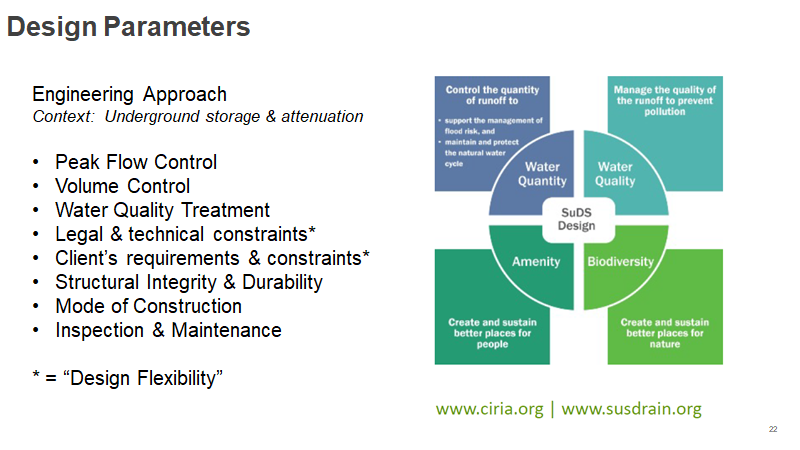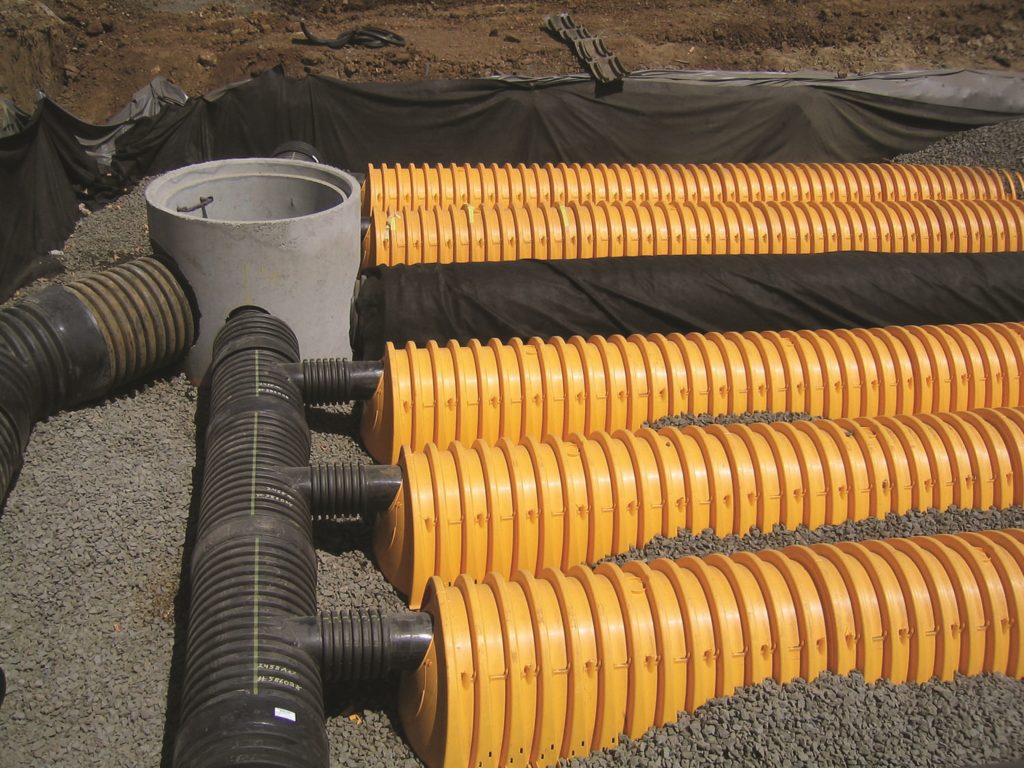Most new build sites across the UK will now have a requirement for a water attenuation system in order to control stormwater that lands on the site. Before sites are built on the ground it will often naturally soak up rainfall however when new buildings are created there is nowhere for the rainfall to go. Water attenuation systems work by holding back the water in a storage vessel on site and slowly releasing the rainwater to the storm drain at a rate in which the infrastructure can handle.
Whilst there are many different types of stormwater storage and attenuation solutions: permeable block paving, geocellular crates, large diameter pipes, vaults and plastic corrugated arch structures such as ADS StormTech, not all systems provide the same attributes. Product choice is therefore central to the engineering solution. A simple designation of inflow rate, outflow rate and storage volume could result in a poorly executed project.
A well-designed attenuation project will not only consider the hydraulic functionality of the system (flow control and volume control), but also the fundamental principles of SuDS Best Practice, often cited as the four pillars of SuDS, i.e. Water Quantity, Water Quality, Biodiversity and Amenity.

Aligning the engineering design parameters for below ground attenuation with the four pillars of SuDS Best Practice
Consideration of these design parameters may lead to a decision to provide attenuation below ground. Cost of land is frequently the main consideration and the developer’s desire to maximise the return on their investment, although other issues such as Planning Gain and a requirement to provide parks, car parks or other civil amenities could also be a factor. In this context, it should be noted that all four pillars of SuDS Best Practice may not be achievable, although the hydraulic performance of the system is essential and must always be satisfied to mitigate against flooding.
To help achieve SuDS Best Practice, some proprietary below ground systems can provide integral water quality treatment, such as the StormTech system from Advanced Drainage Systems (ADS). This solution can contribute to the water quality requirements of the project without the need for additional expensive equipment. Other systems that are unable to provide water quality treatment may require additional SuDS components, such as separate pre-treatment for silt removal.

ADS StormTech includes Isolator Row – a ‘free’ water quality treatment device
At the design stage, a number of other limitations should be considered, such as legal and technical constraints and the client’s specific requirements. The below ground structure will become an infrastructure asset and as such it will require appropriate structural robustness and durability.
It is also vital to consider how the attenuation system will be built. The choice of system used can affect speed and cost of construction and other factors such as the number of transport movements to/from site, storage space, footprint to volume ratio, excavation and muck-away costs, minimum depth of cover, invert depth / construction depth / proximity to groundwater all need to be considered as part of the optimum design solution. Crucially – and often overlooked – is the ease of inspection and cost-effectiveness of maintenance. Sometimes, the most traditional solution in terms of hydraulic requirements, can give the client an ongoing problem in terms of effective cleaning and upkeep.
Over the coming months, we shall be taking a closer look at all of these factors and how best to accommodate them in an optimised SuDS attenuation system.
To find out more about ADS UK’s Water Attenuation Systems contact us today on 0203 442 0607 or click here.

Stuart Crisp is UK Manager for Advanced Drainage Systems (ADS). ADS is America’s largest manufacturer of thermoplastic corrugated drainage pipes and a specialist in water management systems. StormTech has a long and successful track record with over 40,000 below ground SuDS attenuation system installations using in excess of 2.5m units.
Originally published in Water magazine March 2022